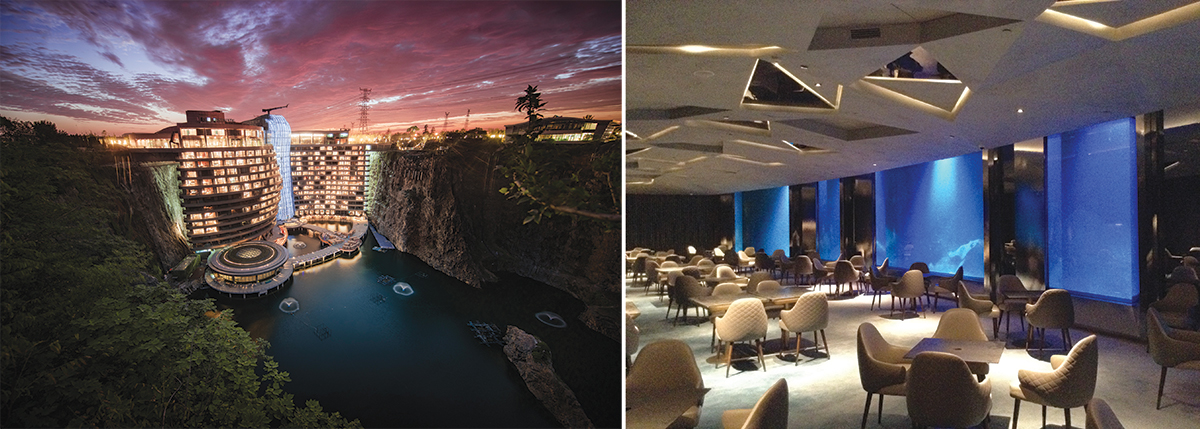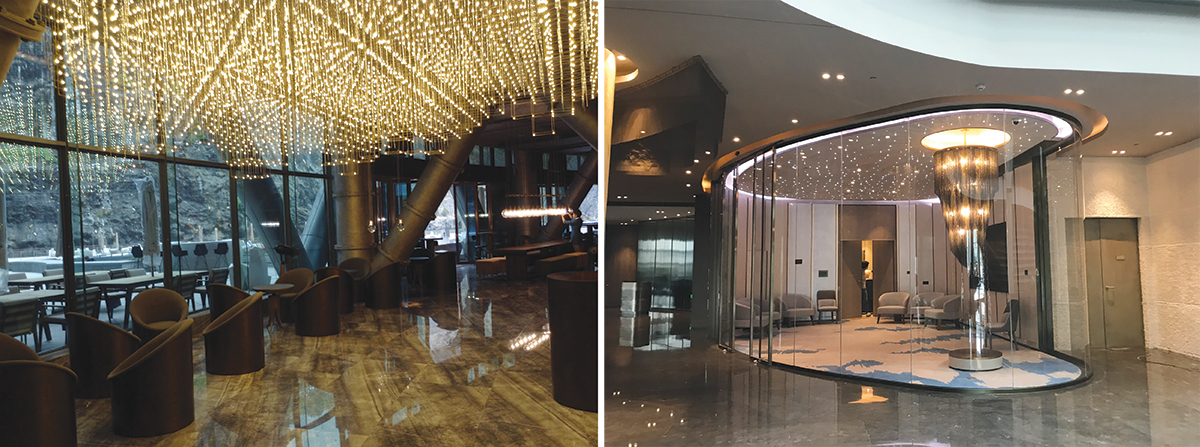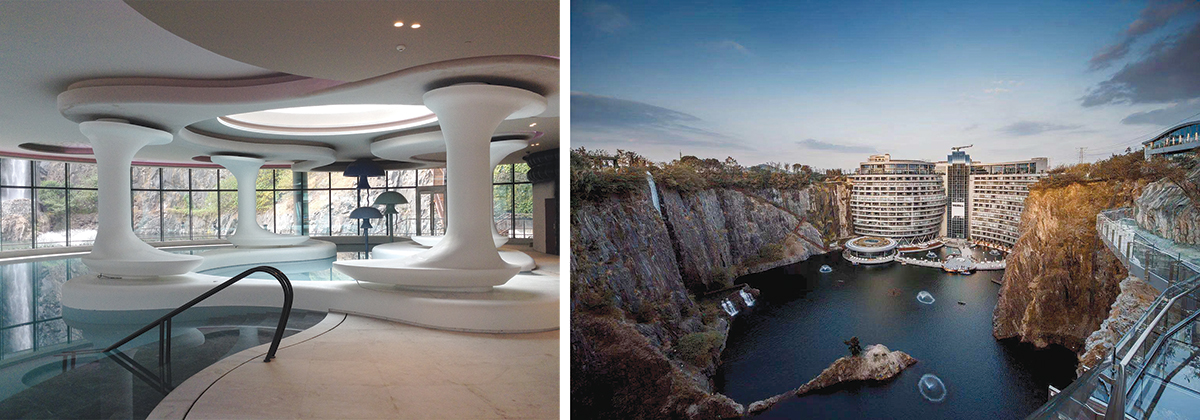
Fact File
Project: Shimao Wonderland Intercontinental
Location: Songjiang, Shanghai
Building Area: 62,171.9m2
Guestrooms: 337
Floors: 2 above ground level, 16 below ground level, 2 under water
Developer: Shimao Group
Operator: IHG (Intercontinental Hotels Group)
Architect: Martin Jochman, Studio JADE+QA (concept with ATKINS)
Time scale: 2006 - 2018
Photography: JADE+QA, Blackstation & Kevin
This 5-star Intercontinental resort hotel featuring 337 guestrooms, is located in approx 280 x 220m, 88m deep, water filled, disused quarry. It opened to the public in 2018, following an extensive design development over six years. The construction involved the difficult challenge of stabilising the cliff faces adjacent to the hotel wings, laying the foundations and sub structure on the quarry floor level, placing the spectacular steel structure of the quest wings within the quarry, and completing the internal fit out and the extensive landscape.

The building concept retains its original 'ground scraper' character with only two of the building's levels above the ground and 16 levels cascading down the rugged quarry cliff face. The two lowest levels are under water, with one level utilised as guest rooms and restaurants, facing an underwater aquarium - another unique aspect of this resort.
The hotel also features a large conference/ballroom centre, water-based leisure facilities and swimming pools on the quarry bottom water level. Externally, there are landscaped facilities such as an outdoor themed entertainment park and cantilevered glass floor overlook walkway.

The impact of the building on the local environment has been minimised by adopting a low profile covered with grass roof. A 'glass waterfall' structure houses the vertical circulation core with observation lifts. The mainly passive sustainable features take advantage of the orientation, low profile, grass roof and the unique microclimate caused by the thermal properties of the quarry rock mass and the quarry lake, cooling the structure in the summer and heating in the winter.
The engineering challenges included seismic implications of the ‘tall building fixed at both ends’ and the associated problems of fire safety, drainage, water quality and circulation and the fact that the building is an inverted ‘ground scraper’.















